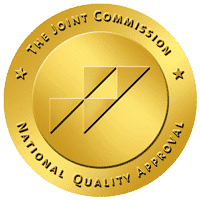
World’s Most Dangerous Drugs



Drug overdose deaths are occurring at a startling rate. In 2021, nearly 108,000 people in the United States died of drug overdoses and drug poisoning. More than half, a staggering 40,000 individuals, died from using some of the deadliest drugs in the United States. Sixty-seven percent of those deaths involved synthetic opioids like fentanyl.
The traditional war on drugs has fought illicit drug use. However, many of today’s users are becoming hooked on drugs when their access to legal prescription medications dries up or becomes too expensive. This has contributed to one of the worst drug epidemics the nation has ever seen. Sadly, this epidemic is growing with the increased use of these deadly drugs.
In this blog, we’ll look at the following deadly drugs:
Fentanyl is a synthetic drug that is 100 times stronger than morphine. Originally, fentanyl was designed as a painkiller. Drug dealers later began adding it to heroin to strengthen the effects of illicit drugs.
Now fentanyl and other opioids are the leading cause of overdose deaths in the United States. Illicit fentanyl accounted for 77% of adolescent overdose deaths in 2021.
A fentanyl overdose can cause respiratory failure in a matter of minutes. The drug is even more deadly because many users do not realize they’re taking it and, therefore, cannot prepare for its effects.

Fentanyl-laced heroin and other drugs cause thousands of deaths each year. To counteract this, the government has been pushing for the widespread integration of the drug naloxone.
Naloxone is called an “opioid antagonist” because of its ability to stop the effects of an opioid overdose for up to 90 minutes, giving users enough time to call for help and receive emergency treatment.
Rainbow fentanyl is a counterfeit fentanyl tablet being introduced in the U.S. These street drugs can resemble chunks of sidewalk chalk or colorful smarties-style candies.
Making the illegal substance resemble candy allows for easier smuggling under the nose of authorities, allowing for the introduction of the product to a younger customer base that has heard of the dangers of “blues” or “pinks” – two of the more readily available versions of synthetic fentanyl already on the streets.
Fentanyl and its various combinations are incredibly dangerous; just 2 milligrams, the equivalent of 10-15 grains of salt, can kill an adult male who has never been exposed to an opioid.
Like fentanyl, heroin is a powerful opioid that produces an intense “high” marked by a heavy calm that washes over the body. The drug can induce euphoria as well as relieve pain.
Heroin binds to the brain’s built-in opioid receptors and produces dopamine – the “feel good” neurotransmitter. Dopamine is what the brain makes in our mind’s reward center when we partake in other activities, such as eating or having sex.
Heroin is highly addictive, and people can quickly acquire a tolerance that increases their risk of an overdose every time they use it.
Drug overdose deaths involving heroin rose from 1,960 in 1999 to 15,469 in 2016; Since 2016, the number of fatalities has decreased, with 13,165 deaths reported in 2020.
Cocaine is a stimulant drug made from coca leaves. When inhaled as a powder, this drug triggers the brain’s reward system and creates a burst of energy and euphoria.
Drug overdose deaths involving cocaine rose steadily from 5,419 in 2014 to 19,447 in 2020.
People who use cocaine have a reduced need for sleep and food. Users can feel hyper-aware of their surroundings through an enhanced sense of touch, sight, smell, and sound. A classic party drug, cocaine, is typically first introduced to people in social settings.
Recently, there has been a deadly habit among drug users who mix cocaine and heroin. This act, called “speedballing,” can produce a much more intense and longer high than either drug produces.
Commonly referred to as “meth,” methamphetamine is a drug that can sometimes be used to treat ADHD. Crystal meth is the most common form of meth that dates to World War II, when soldiers would be given high doses to stay awake for long terms.
Today, many people take it in a party setting to induce confidence, high levels of energy, and a sense of uncontrollable euphoria.
In the fiscal year 2021, there were 8,456 methamphetamine trafficking offenders, who accounted for 48.3% of all offenders sentenced for a drug trafficking offense.
Likewise, Methamphetamine trafficking offenders have increased by 17.2% since the fiscal year 2017.
These psychoactive drugs are often called “benzos” and are commonly prescribed to treat many conditions, including anxiety disorders, seizures, and insomnia. The most common benzodiazepines include Valium, Xanax, Klonopin, and Librium. The drug produces a drowsy, relaxed effect lasting up to 12 hours or more.
As with many other drugs, people often develop a substance use disorder by trying to self-medicate with benzodiazepines. The comfortable weight of the drug’s sedative effect can provide an escape from panic, anxiety, and feelings of depression. But those feelings don’t last forever.

Alcohol is an addictive substance and depressant that affects the Central Nervous System (CNS). It has toxic effects on the digestive and cardiovascular systems and can increase the risk of certain cancer. More specifically, alcohol can cause impaired motor function, high blood pressure, heart disease, stroke, liver disease, hair loss, and digestive problems. It interferes with the brain’s neuropathways and can cause balance, memory, speech, and reasoning dysfunction.
In 2021, the National Institute on Drug Abuse reported 29.5 million people ages 12 and older being diagnosed with an AUD (Alcohol Use Disorder). Not only is heavy alcohol consumption potentially fatal for the user, but it can also affect those around them. More than 10,000 lives are lost annually due to drunk driving incidents. In 2022, 355 alcohol-related fatalities occurred in Arizona alone.
Oxycodone consists of a synthetic opioid compound that’s artificially synthesized. It appears in a white, odorless powder form. Its primary purpose is to manage pain and serves as an active component in various prescription drugs.
Oxycodone possesses an exceptionally high level of potency. It’s regarded as one of the most powerful oral pain relievers available. According to the United States Department of Justice, more than 13 million Americans abuse Oxycodone, including some children as young as 12 years old. Due to its potency, the drug carries a significant risk of addiction, abuse, and overdose.
The drug’s potency and impact on the nervous system can give rise to issues. Oxycodone can cause respiratory depression, papillary constriction, and other dangerous side effects. The severity of these side effects can range from mild to moderate to severe, and in extreme cases of abuse, they may even become life-threatening.
Quitting one of the deadliest drugs can be almost as dangerous as chronically using them. The withdrawal symptoms can be overwhelming. In severe cases, withdrawal can cause bodily harm when someone attempts to quit without the supervision of trained professionals.
If you or someone you love is suffering from addiction, contact your nearest hospital or a professional at Soul Surgery Rehabilitation in Phoenix for help.
Finding the right rehabilitation facility will help you safely detox from whatever drug(s) you’re currently using. We will provide you with the physical and emotional support needed to alleviate discomfort and help you strive toward a brighter future.
Published on November 15, 2019
Updated on June 16, 2023







Take the first step in your journey to recovery.
"*" indicates required fields